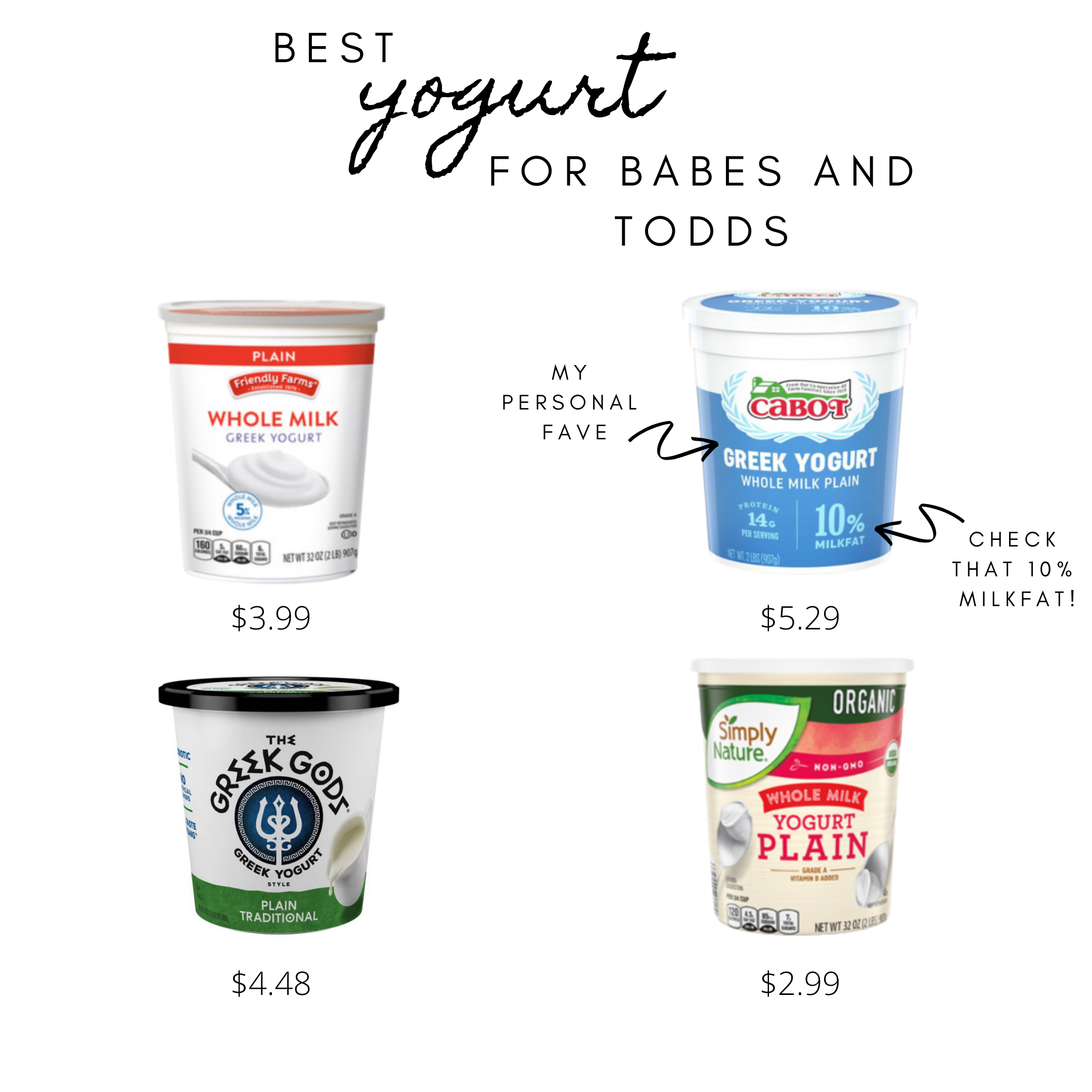What's the Best Yogurt for Babies and Toddlers?
Hello friends! My new book is ALMOST here! Pre-order begins next week which means it is somehow already November and also means WE FINISHED OUR SECOND BOOK!! WOOOO
The title is Whole Food Baby Food, and inside its pages you will find a lot of talk about building a whole food kitchen (complete with lists for pantry and fridge/freezer). One of those whole food staples is for sure plain yogurt, the best yogurt choice for babies and toddlers.
Plain, whole milk yogurt
Why plain? Well first of all it is incredibly versatile. You can use it in recipes in the place of milk or sour cream for extra richness and nutrient density. You can also use in in place of sour cream to top chili, tacos, chilaquiles, split pea soup, THE LIST GOES ON! It’s something I always have on hand, whereas sour cream is something I would have to specifically grab if I needed it for a recipe.
Secondly, yogurt is one of those super healthy foods that sometimes gets a super unhealthy makeover by being loaded with sugar and other sweeteners, along with too much added flavoring. This is especially true in yogurts marketed to kids (anyone remember Trix yogurt??). Yogurt has a naturally tangy flavor that is a great one for babies to learn to like early on, potentially helping to set them up to accept more challenging flavors later in life. Serving it plain highlights this without the added readily accepted sweetness and fruit flavors.
When serving yogurts to babies and toddlers, look for varieties made with whole milk (usually at least 5% milk fat). You can choose either Greek or regular varieties. Greek yogurt has been strained to remove more of the whey, so is higher in protein and usually in fat too if the fat is left in the finished product. It tends to be thicker and creamier (a stick-to-your-spoon texture), where regular plain yogurt is a bit thinner and lower in protein and fat. Regular yogurt is also less expensive when compared to Greek.
When offering plain yogurt to babies and toddlers, flavoring plain yogurt at home is a great idea, but also offer it on its own (especially early on in the introduction of solids) so babe can learn to enjoy that tart, creamy flavor without the sweetness.
Even plain yogurt has naturally occurring sugars called lactose, usually about 11g per serving. These naturally occurring carbohydrates are perfectly fine for baby and are not added sugars (a question I’m often asked about with whole milk as well!).
Dairy is one of the big 8 allergens, and yogurt is an awesome way to introduce it. Because some of the lactose as been broken down in the fermentation process, it is often better tolerated than milk (which should be avoided as a drink until after 12 months). Find out way more about allergen introduction in this post. Yogurt also makes a great base for stirring in other allergens such as peanut butter, almond butter, or sesame seed paste (tahini).
The graphic features a few of my favorite brands. Typically I go with Aldi because that is where I shop the most, but I love the richness of Cabot and will pick that up if it’s on sale.







